MARKETING
The Top Channels Consumers Use to Learn About Products [New Data]
Imagine you’re scrolling through Instagram and see an ad for a product you might be interested in.
While your first thought might be that ad targeting is getting too advanced, you still want to find out more about the product and the company that makes it. So where do you look next?
Are you going straight to their Instagram page, visiting their website, searching for online reviews, or watching a YouTube unboxing video?
These are the questions we asked 1,000 consumers in our 2022 State of Consumer Trends Survey to find out how people behave after discovering a product they might want.
Of course, this will vary drastically by generation, so we’ll include some insights split by age group as we go. You can also check out our full report on consumer shopping habits by generation for more age-specific info.
How Do Consumers Want to Learn About Products in 2022?
Consumers are learning about products and their features through a wide variety of channels. Among the most popular are searching the web, going to retail stores, TV ads, word of mouth, and online reviews.
![The Top Channels Consumers Use to Learn About Products [New Data] how consumers prefer to learn about products](https://articles.entireweb.com/wp-content/uploads/2022/07/1658483954_707_The-Top-Channels-Consumers-Use-to-Learn-About-Products-New.png)
While social media, YouTube ads, unboxing videos, and streaming services are less popular when we look at all generations combined, splitting this up by age group paints a very different picture.
![The Top Channels Consumers Use to Learn About Products [New Data] how consumers prefer to learn about products](https://articles.entireweb.com/wp-content/uploads/2022/07/1658483954_775_The-Top-Channels-Consumers-Use-to-Learn-About-Products-New.png) Gen Z, Millennials, and Gen X set themselves apart from Boomers through their preference for learning about products through social media and YouTube ads. Gen Z also favors unboxing videos more than any other generation.
Gen Z, Millennials, and Gen X set themselves apart from Boomers through their preference for learning about products through social media and YouTube ads. Gen Z also favors unboxing videos more than any other generation.
Meanwhile, Gen X and Boomers show a clear preference for learning about products through TV ads and in retail stores. Boomers also favor word of mouth more than any other generation.
But there are also some similarities — learning about products by searching the internet and through online reviews is popular among all generations.
So let’s dive deeper into each of the most popular channels consumers are using to learn about products.
SEO is Key for Product Discovery
36% of consumers prefer to learn about products by searching the internet, highlighting the importance of optimizing your website for SEO.
Searching the internet is the number one way to learn about products among all age groups, except for Gen Z, who prefer to use social media by just 1 percentage point. While online search is extremely popular among all age groups, it progressively gets more favor with each older generation.
![The Top Channels Consumers Use to Learn About Products [New Data] which percent of each generation uses internet to learn about a product](https://articles.entireweb.com/wp-content/uploads/2022/07/1658483954_89_The-Top-Channels-Consumers-Use-to-Learn-About-Products-New.png)
Since we know consumers are searching the web to better understand products and their features, it’s also key to get a sense of which devices they are using to create the best user experience.![The Top Channels Consumers Use to Learn About Products [New Data] which device is used most often for search queries](https://articles.entireweb.com/wp-content/uploads/2022/07/1658483955_593_The-Top-Channels-Consumers-Use-to-Learn-About-Products-New.png)
Not only are mobile phones the device of choice for over 50% of consumers when searching up a question online, but they are also the most used device when they shop online.
![The Top Channels Consumers Use to Learn About Products [New Data] which device is used most often when shopping online](https://articles.entireweb.com/wp-content/uploads/2022/07/1658483955_726_The-Top-Channels-Consumers-Use-to-Learn-About-Products-New.png)
Especially when it comes to younger generations, the use of mobile devices for search dwarfs searching on a computer, meaning you should optimize your website to be mobile-first.
![The Top Channels Consumers Use to Learn About Products [New Data] search query device by generation](https://articles.entireweb.com/wp-content/uploads/2022/07/1658483955_95_The-Top-Channels-Consumers-Use-to-Learn-About-Products-New.png)
Retail Is Still Relevant, Especially for Older Generations
Coming in second place, 27% of consumers say they prefer to learn about products in retail stores. Unsurprisingly, the in-person approach is most popular among older age groups, though it isn’t completely lost on Gen Z and is still favored by almost one in five Millennials.
![The Top Channels Consumers Use to Learn About Products [New Data] 1658483955 151 The Top Channels Consumers Use to Learn About Products New](https://articles.entireweb.com/wp-content/uploads/2022/07/1658483955_151_The-Top-Channels-Consumers-Use-to-Learn-About-Products-New.png)
TV Ads Are Key for Boomers and Gen X
One in four consumers say TV ads are their preferred way of learning more about a product and its features. TV ads rank in the top three most preferred channels to learn about products for Gen X and Baby Boomers, but lose favor with Gen Z and Millennials who strongly prefer other digital channels like social media.
![The Top Channels Consumers Use to Learn About Products [New Data] percent of age groups that use retail stores to learn about products](https://articles.entireweb.com/wp-content/uploads/2022/07/1658483955_364_The-Top-Channels-Consumers-Use-to-Learn-About-Products-New.png)
Word of Mouth Is Relevant, But Gen Z Looks to Influencers Instead
23% of consumers say they prefer to learn about products through word of mouth. Interestingly, word of mouth ranks in the top 5 channels for learning about products for every generation except Gen Z. Our Consumer Shopping Report 2022 even found that Gen Z places more importance on recommendations from influencers than their friends and family.
Online Reviews Are Sought By All Generations
One in five consumers say they prefer to learn about products through online reviews, regardless of generation. Of course, whether they go to YouTube, Amazon reviews, or a dedicated blog to get those insights will depend on their age.
![The Top Channels Consumers Use to Learn About Products [New Data] percent of people who want to learn about products through reviews](https://articles.entireweb.com/wp-content/uploads/2022/07/1658483955_54_The-Top-Channels-Consumers-Use-to-Learn-About-Products-New.png)
Social Media Is Key For Gen Z and Millennials
Overall, just 17% of consumers say social media is their preferred channel for learning about products and their features. However, social media comes in at #1 for Gen Z, second for Millennials, and fourth for Gen X.
![The Top Channels Consumers Use to Learn About Products [New Data] what percentage of age groups prefer to learn about products on social media](https://articles.entireweb.com/wp-content/uploads/2022/07/1658483955_236_The-Top-Channels-Consumers-Use-to-Learn-About-Products-New.png)
Next, let’s take a look at how consumers want to learn about products on social media.
![The Top Channels Consumers Use to Learn About Products [New Data] how consumers learn about products on social media](https://articles.entireweb.com/wp-content/uploads/2022/07/1658483955_547_The-Top-Channels-Consumers-Use-to-Learn-About-Products-New.png)
Feed posts, ads, and stories are the top three formats for learning about products on social media. 36% of consumers want to learn about products through short-form videos like TikToks or Reels, and another 27% prefer to go through influencers, which is especially popular among younger generations.
![The Top Channels Consumers Use to Learn About Products [New Data] how people learn about products from influencers](https://articles.entireweb.com/wp-content/uploads/2022/07/1658483955_237_The-Top-Channels-Consumers-Use-to-Learn-About-Products-New.png)
You might also be wondering what kind of content consumers want to see from brands on social media.
![The Top Channels Consumers Use to Learn About Products [New Data] what kind of branded social media is most memorable](https://articles.entireweb.com/wp-content/uploads/2022/07/1658483955_601_The-Top-Channels-Consumers-Use-to-Learn-About-Products-New.png)
Almost half of consumers say funny content is the most memorable, followed by content they can relate to. Making content that showcases your product or service is also highly memorable to 36% of consumers.
YouTube Ads are Key For Gen Z and Millennials
Overall, just 13% of consumers say they prefer learning about a product and its features through YouTube ads, but the video platform ranks among the top channels for Gen Z and Millennials.
Unboxing Videos are a Gen Z Thing
While just 9% of consumers prefer to learn about a product and its features through unboxing videos, they are uniquely popular with Gen Z.
![The Top Channels Consumers Use to Learn About Products [New Data] percentage of generations that use unboxing videos to learn about products](https://articles.entireweb.com/wp-content/uploads/2022/07/1658483955_782_The-Top-Channels-Consumers-Use-to-Learn-About-Products-New.png)
Making Sense of Consumer Data
Want to learn more about the latest trends and shopping habits consumers are navigating, and how your brand can leverage them to better meet your targets in 2022?
Check out our consumer shopping report as well as our State of Consumer Trends Report, coming in late July.
In the meantime, see how marketers are navigating 2022 with our State of Marketing Trends Report below.
MARKETING
Google’s Surgical Strike on Reputation Abuse
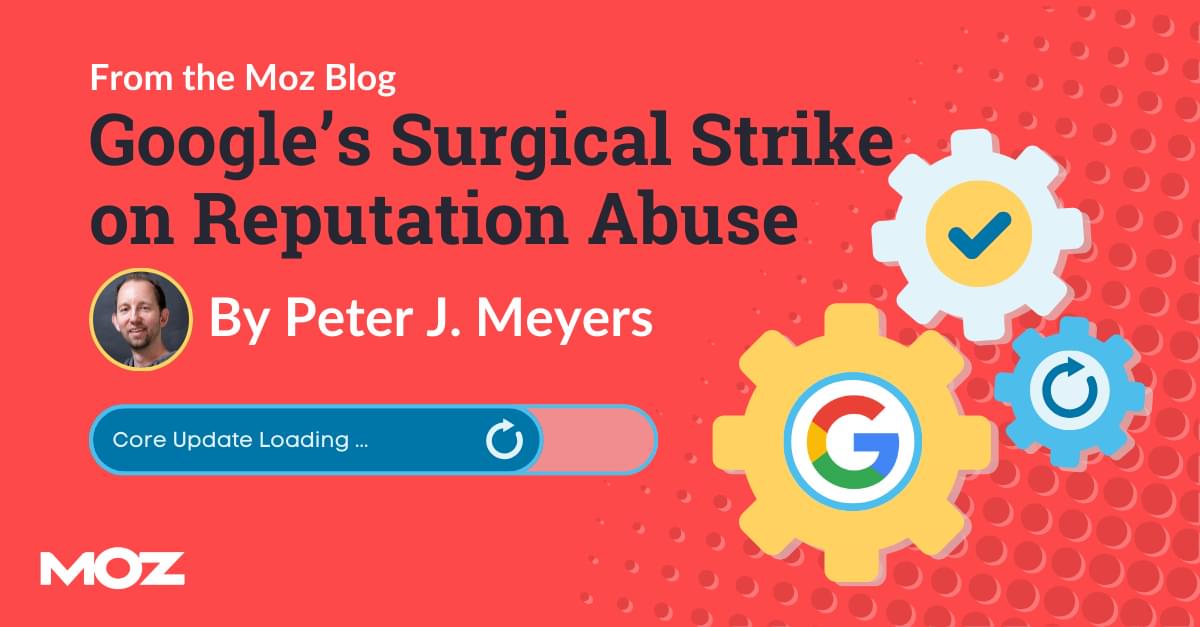
These aren’t easy questions. On the one hand, many of these sites do clearly fit Google’s warning and were using their authority and reputation to rank content that is low-relevance to the main site and its visitors. With any punitive action, though, the problem is that the sites ranking below the penalized sites may not be of any higher quality. Is USA Today’s coupon section less useful than the dedicated coupon sites that will take its place from the perspective of searchers? Probably not, especially since the data comes from similar sources.
There is a legitimate question of trust here — searchers are more likely to trust this content if it’s attached to a major brand. If a site is hosting third-party content, such as a coupon marketplace, then they’re essentially lending their brand and credibility to content that they haven’t vetted. This could be seen as an abuse of trust.
In Google’s eyes, I suspect the problem is that this tactic has just spread too far, and they couldn’t continue to ignore it. Unfortunately for the sites that were hit, the penalties were severe and wiped out impacted content. Regardless of how we feel about the outcome, this was not an empty threat, and SEOs need to take Google’s new guidelines seriously.
MARKETING
18 Events and Conferences for Black Entrepreneurs in 2024

Welcome to Breaking the Blueprint — a blog series that dives into the unique business challenges and opportunities of underrepresented business owners and entrepreneurs. Learn how they’ve grown or scaled their businesses, explored entrepreneurial ventures within their companies, or created side hustles, and how their stories can inspire and inform your own success.
It can feel isolating if you’re the only one in the room who looks like you.
MARKETING
IAB Podcast Upfront highlights rebounding audiences and increased innovation
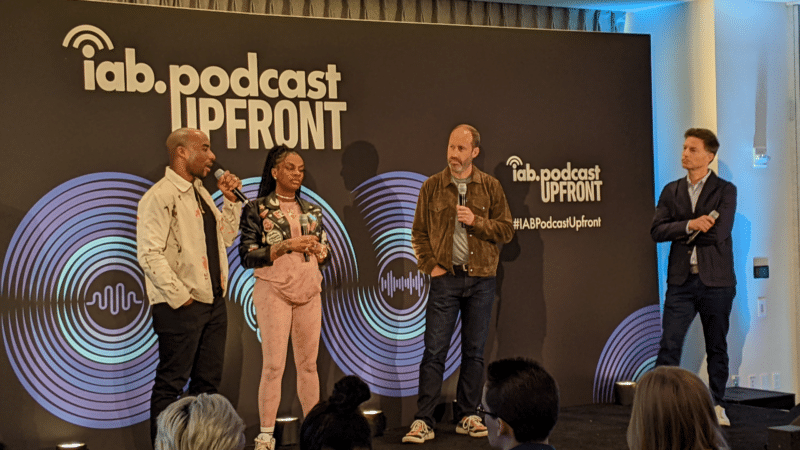
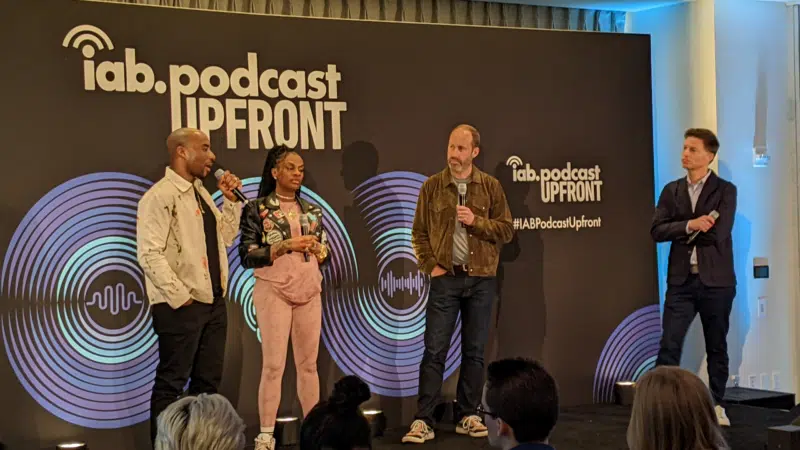
Podcasts are bouncing back from last year’s slowdown with digital audio publishers, tech partners and brands innovating to build deep relationships with listeners.
At the IAB Podcast Upfront in New York this week, hit shows and successful brand placements were lauded. In addition to the excitement generated by stars like Jon Stewart and Charlamagne tha God, the numbers gauging the industry also showed promise.
U.S. podcast revenue is expected to grow 12% to reach $2 billion — up from 5% growth last year — according to a new IAB/PwC study. Podcasts are projected to reach $2.6 billion by 2026.
The growth is fueled by engaging content and the ability to measure its impact. Adtech is stepping in to measure, prove return on spend and manage brand safety in gripping, sometimes contentious, environments.
“As audio continues to evolve and gain traction, you can expect to hear new innovations around data, measurement, attribution and, crucially, about the ability to assess podcasting’s contribution to KPIs in comparison to other channels in the media mix,” said IAB CEO David Cohen, in his opening remarks.
Comedy and sports leading the way
Podcasting’s slowed growth in 2023 was indicative of lower ad budgets overall as advertisers braced for economic headwinds, according to Matt Shapo, director, Media Center for IAB, in his keynote. The drought is largely over. Data from media analytics firm Guideline found podcast gross media spend up 21.7% in Q1 2024 over Q1 2023. Monthly U.S. podcast listeners now number 135 million, averaging 8.3 podcast episodes per week, according to Edison Research.
Comedy overtook sports and news to become the top podcast category, according to the new IAB report, “U.S. Podcast Advertising Revenue Study: 2023 Revenue & 2024-2026 Growth Projects.” Comedy podcasts gained nearly 300 new advertisers in Q4 2023.
Sports defended second place among popular genres in the report. Announcements from the stage largely followed these preferences.
Jon Stewart, who recently returned to “The Daily Show” to host Mondays, announced a new podcast, “The Weekly Show with Jon Stewart,” via video message at the Upfront. The podcast will start next month and is part of Paramount Audio’s roster, which has a strong sports lineup thanks to its association with CBS Sports.
Reaching underserved groups and tastes
IHeartMedia toasted its partnership with radio and TV host Charlamagne tha God. Charlamagne’s The Black Effect is the largest podcast network in the U.S. for and by black creators. Comedian Jess Hilarious spoke about becoming the newest co-host of the long-running “The Breakfast Club” earlier this year, and doing it while pregnant.
The company also announced a new partnership with Hello Sunshine, a media company founded by Oscar-winner Reese Witherspoon. One resulting podcast, “The Bright Side,” is hosted by journalists Danielle Robay and Simone Boyce. The inspiration for the show was to tell positive stories as a counterweight to negativity in the culture.
With such a large population listening to podcasts, advertisers can now benefit from reaching specific groups catered to by fine-tuned creators and topics. As the top U.S. audio network, iHeartMedia touted its reach of 276 million broadcast listeners.
Connecting advertisers with the right audience
Through its acquisition of technology, including audio adtech company Triton Digital in 2021, as well as data partnerships, iHeartMedia claims a targetable audience of 34 million podcast listeners through its podcast network, and a broader audio audience of 226 million for advertisers, using first- and third-party data.
“A more diverse audience is tuning in, creating more opportunities for more genres to reach consumers — from true crime to business to history to science and culture, there is content for everyone,” Cohen said.
The IAB study found that the top individual advertiser categories in 2023 were Arts, Entertainment and Media (14%), Financial Services (13%), CPG (12%) and Retail (11%). The largest segment of advertisers was Other (27%), which means many podcast advertisers have distinct products and services and are looking to connect with similarly personalized content.
Acast, the top global podcast network, founded in Stockholm a decade ago, boasts 125,000 shows and 400 million monthly listeners. The company acquired podcast database Podchaser in 2022 to gain insights on 4.5 million podcasts (at the time) with over 1.7 billion data points.
Measurement and brand safety
Technology is catching up to the sheer volume of content in the digital audio space. Measurement company Adelaide developed its standard unit of attention, the AU, to predict how effective ad placements will be in an “apples to apples” way across channels. This method is used by The Coca-Cola Company, NBA and AB InBev, among other big advertisers.
In a study with National Public Media, which includes NPR radio and popular podcasts like the “Tiny Desk” concert series, Adelaide found that NPR, on average, scored 10% higher than Adelaide’s Podcast AU Benchmarks, correlating to full-funnel outcomes. NPR listeners weren’t just clicking through to advertisers’ sites, they were considering making a purchase.
Advertisers can also get deep insights on ad effectiveness through Wondery’s premium podcasts — the company was acquired by Amazon in 2020. Ads on its podcasts can now be managed through the Amazon DSP, and measurement of purchases resulting from ads will soon be available.
The podcast landscape is growing rapidly, and advertisers are understandably concerned about involving their brands with potentially controversial content. AI company Seekr develops large language models (LLMs) to analyze online content, including the context around what’s being said on a podcast. It offers a civility rating that determines if a podcast mentioning “shootings,” for instance, is speaking responsibly and civilly about the topic. In doing so, Seekr adds a layer of confidence for advertisers who would otherwise pass over an opportunity to reach an engaged audience on a topic that means a lot to them. Seekr recently partnered with ad agency Oxford Road to bring more confidence to clients.
“When we move beyond the top 100 podcasts, it becomes infinitely more challenging for these long tails of podcasts to be discovered and monetized,” said Pat LaCroix, EVP, strategic partnerships at Seekr. “Media has a trust problem. We’re living in a time of content fragmentation, political polarization and misinformation. This is all leading to a complex and challenging environment for brands to navigate, especially in a channel where brand safety tools have been in the infancy stage.”
Dig deeper: 10 top marketing podcasts for 2024
-

 PPC6 days ago
PPC6 days agoHow the TikTok Algorithm Works in 2024 (+9 Ways to Go Viral)
-

 SEO5 days ago
SEO5 days agoHow to Use Keywords for SEO: The Complete Beginner’s Guide
-

 MARKETING6 days ago
MARKETING6 days agoHow To Protect Your People and Brand
-
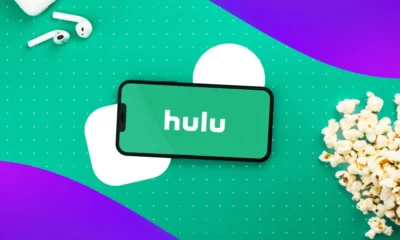
 MARKETING4 days ago
MARKETING4 days agoAdvertising on Hulu: Ad Formats, Examples & Tips
-

 MARKETING5 days ago
MARKETING5 days agoUpdates to data build service for better developer experiences
-

 MARKETING5 days ago
MARKETING5 days agoThe Ultimate Guide to Email Marketing
-
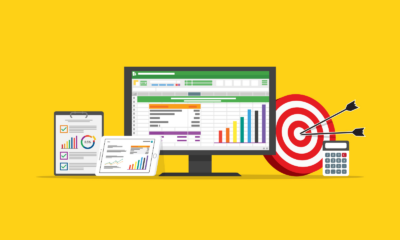
 SEO7 days ago
SEO7 days agoAutomate Multi-Site Reporting With Google Sheets And GSC API
-

 MARKETING22 hours ago
MARKETING22 hours ago18 Events and Conferences for Black Entrepreneurs in 2024


![The Top Channels Consumers Use to Learn About Products [New Data] New Call-to-action](https://articles.entireweb.com/wp-content/uploads/2022/07/1657545233_159_The-Ultimate-List-of-Email-Marketing-Stats-for-2022.png)




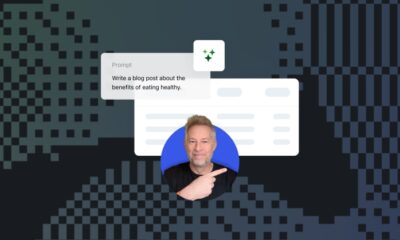







You must be logged in to post a comment Login